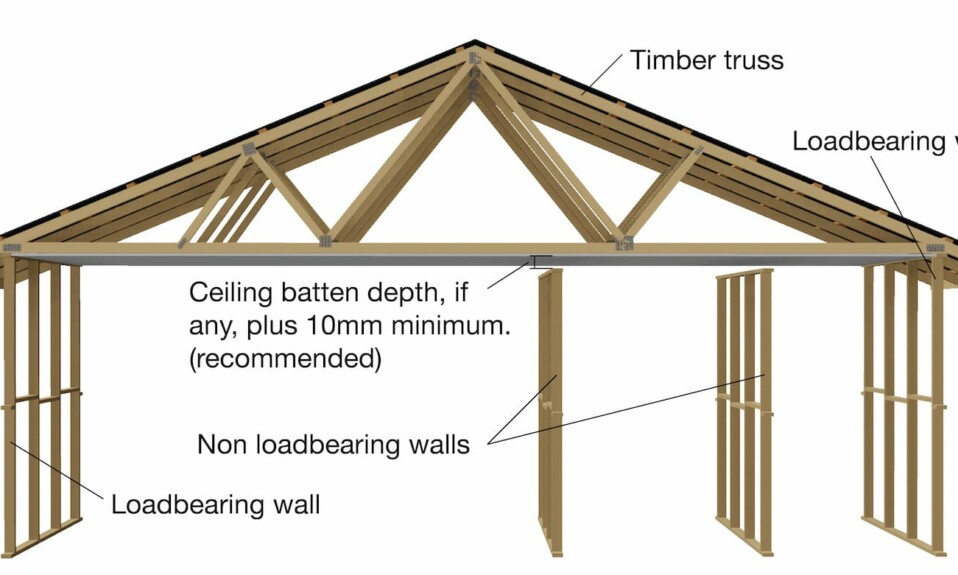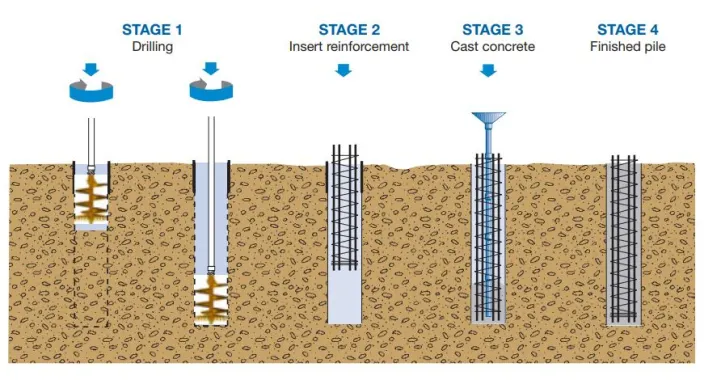Always in the confusion about how many types of walls are used in the building construction. Well, you do not have to worry, here, in this article, we will guide you on all the types of walls that you can use while building anything. Have a look!
Wall refers to a definitive structure made with bricks to define an area and provide shelter and safety. The rigid structure can hold the load of the building. However, depending on the type of construction, there are different types of walls constructed in different areas. Some walls are designed for supportive function, whereas others are designed for soundproofing and sheltering.
So, let’s have a look at the types of walls that are used in building construction. But, before that, it would be better to know the basics of the wall that will help you in diving the subject easily.
Also read: What is Lap Length in Reinforced Concrete?
What Are the Basic Characteristics of a Wall?
There are many things that you need to take care of while building the walls. Some of the basic characteristics of the wall are as follows:
- The wall should be resistant to fire and act as a soundproofing wall.
- A wall has to be stronger enough to carry maximum weight. But on the other hand, the wall should be capable of transferring roof weight and bearing the load of the roof and the floor of the building.
- The wall to hold the load must be supportive enough to open windows, doors, and ventilators.
- The wall must be rigid enough to withstand all weather conditions and resist the impact of the function for which the wall has been constructed.
- The partition wall must be supportive and stable to handle a load of wash basins, fixtures, etc.
Hope you are well versed with the basic characteristics of the wall. Let’s move to the next section where we will talk about the types of walls that are constructed around the world.
Do not forget to read about the different types of cement that you need to know while constructing a wall.
Types of Walls you should Know About
The types of walls are divided into different categories based on the function and type of load they bear. We have tried to cover almost every type of wall that an engineer should know about.
1. Loading Bearing Walls
Load-bearing walls are designed to bear the loads of the walls that are imposed on them from slabs and beams, including the weight of the wall. The load from the floor and roof are directly transferred to its foundation. Moreover, the walls play a supportive role and support structural members such as slabs, beams, and walls on and above the floor. This can be interior walls and exterior walls.
Also, give a read on our article explaining the difference between a one-way slab and a two-way slab.
Different type of load-bearing walls is as follows:
- Retaining wall
- Precast concrete wall
- Masonry wall
- Engineering brick wall
- Pre-panelized load-bearing metal stud wall
- Stonewall
2. Non-Load Bearing Wall
Non-load-bearing walls are those kinds of walls that carry their weight. This wall doesn’t support any other rigid structural members, such as slabs and beams. Non-load-bearing walls are used as partition walls to separate one room into two parts.
The walls are often called interior walls that don’t carry a load of other structures despite their own. The types of non-load bearing walls are as follows:
- Hollow bricks wall
- Façade bricks wall
- Brick wall with a thickness of 115 mm to 225 mm
- Hollow concrete block walls
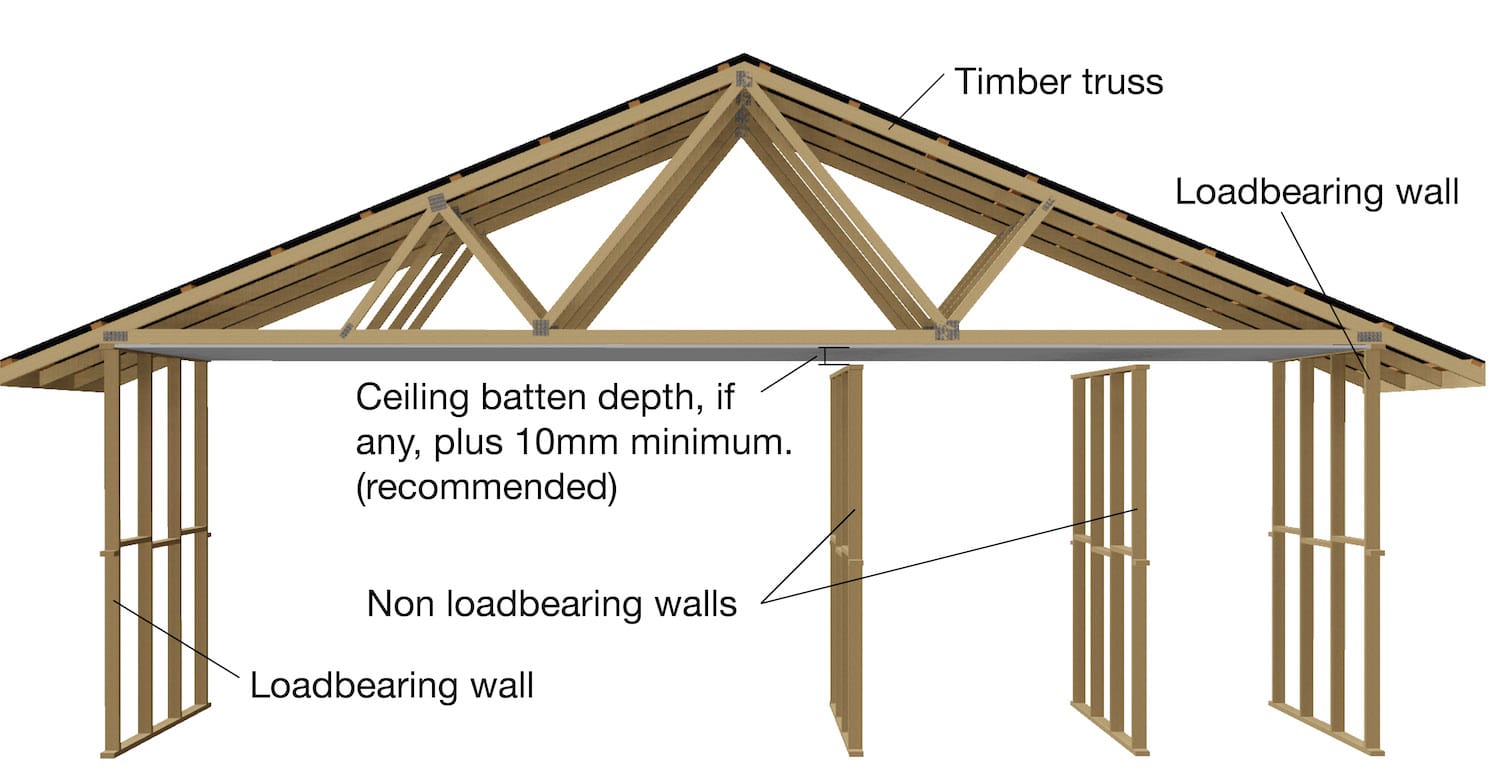
3. Partition Wall
A partition wall is a form of the non-load-bearing wall constructed to divide large spacious rooms into small spaces. The partition wall height will depend on the usage, which can be a story part. This wall is generally made of brick masonry, fiberboard, and glass.

4. Shear Wall
Shear walls are known as framed walls that are specially designed for resisting lateral forces. It’s a form of vertical functional element for the force resisting system used to resist earthquake loading, wind, and other natural calamity load on the building.
A shear wall is generally a wooden frame studded wall wrapped with sheathing material such as plywood. The walls are constructed at a height where the pressure of the windfalls is on the walls and are mainly constructed in high-rise buildings.
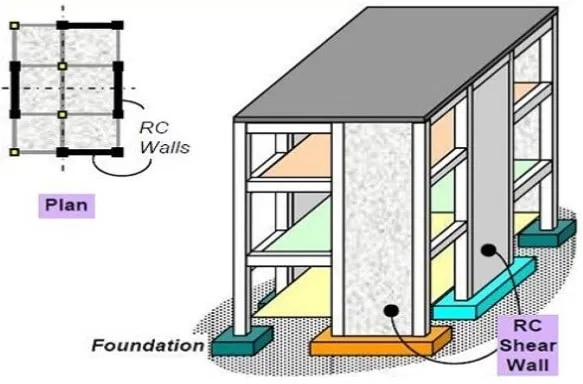
5. Retaining Wall
A retaining wall generally acts as a supportive element to hold back soil on a slope that cannot stay stable naturally without support at the vertical slopes and steep positions. The purpose of this kind of wall is to hold the soil behind them at a specific location. The wall’s height and size may vary depending on the construction project.
For example, it can be a small landscape-based stone wall constructed to surround the garden to hold the soil and big landscape stone walls constructed along the highway and hilly regions.
The walls are usually constructed beneath the ground level and can be categorized as follows:
- Retaining walls are constructed based on gravity
- The walls are made of reinforced concrete
- The retaining wall is made of bricks
- The retaining wall can be constructed will stones

6. Fire Wall
The firewall, as the name indicated, was constructed for protection purposes. It gives protection from fire accidents and keeps your places safe.
The walls are generally made with non-combustible materials such as cement blocks, concrete, and others. Along with this, the fireproof door has been constructed with the wall to deliver ultimate protection. This kind of wall is constructed vertically above the ground.
Related: 14 Standard Room Sizes for Bedroom, Kitchen, Toilet and Hall
6. Course Rubble Stone Masonry Wall

The rubble stone masonry wall is mainly constructed with small stones arranged together and bound in such a manner that the stone exerts equal pressure throughout the wall thickness. The rubble stone masonry walls have a similar pattern and are mainly constructed as boundary walls, composite walls, and many more.
7. Brick Masonry Wall
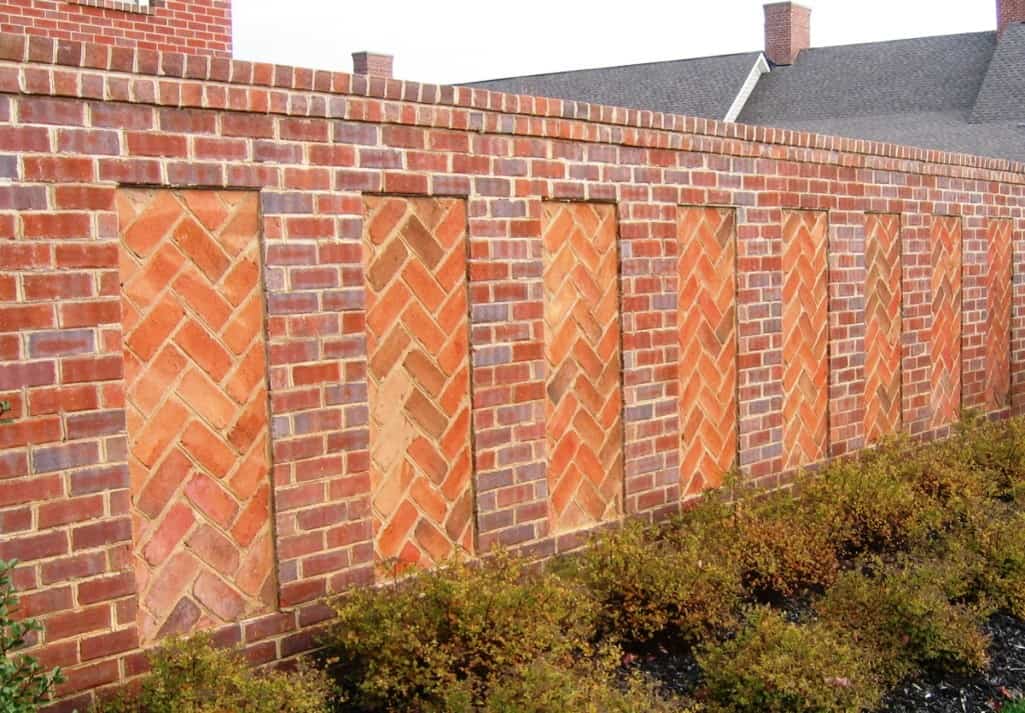
Brick masonry walls, as the name indicates, are constructed with highly durable bricks. The brick wall has a varying thickness and is maybe 10-20 cm thick. The 20 cm thick brick masonry walls are constructed for external structure, whereas the 10 cm thick brick walls are constructed as interior walls. A brick masonry wall is used in various buildings.
8. Core Walls
The core wall lays the foundation of the construction and design to handle the lateral forces exerted on the buildings by earthquakes, wind, and other pressure. At the same time, the core will act as the column and is made up of shear walls that can be sorted out like a core. The core wall is generally placed in the center to minimize the torsion forces.
9. Parapet Wall
The parapet wall is usually constructed in the topmost section of the wall, which is elongated slightly above the roof level. This wall protects the roofs, balconies, walkways, gutters, etc. The parapet walls serve various functions and are specially designed to create the desired façade.
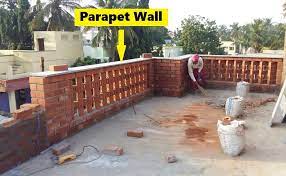
10. Precast Wall
The walls are the finished wall constructed on-site at the factory and other construction sites. Precast walls are excellent to construct if the space is limited and labor limited.
The companies may provide experienced individuals who inaugurate the precast walls on the construction site. It usually helps speed up the construction process and provides a secure environment for the worker.
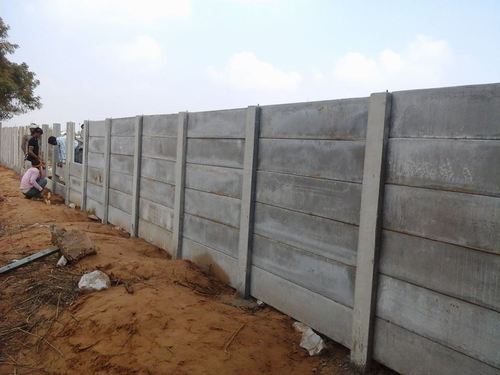
11. Compound Wall
Compound walls are generally constructed to create the boundaries of the buildings. It serves as the protection wall.
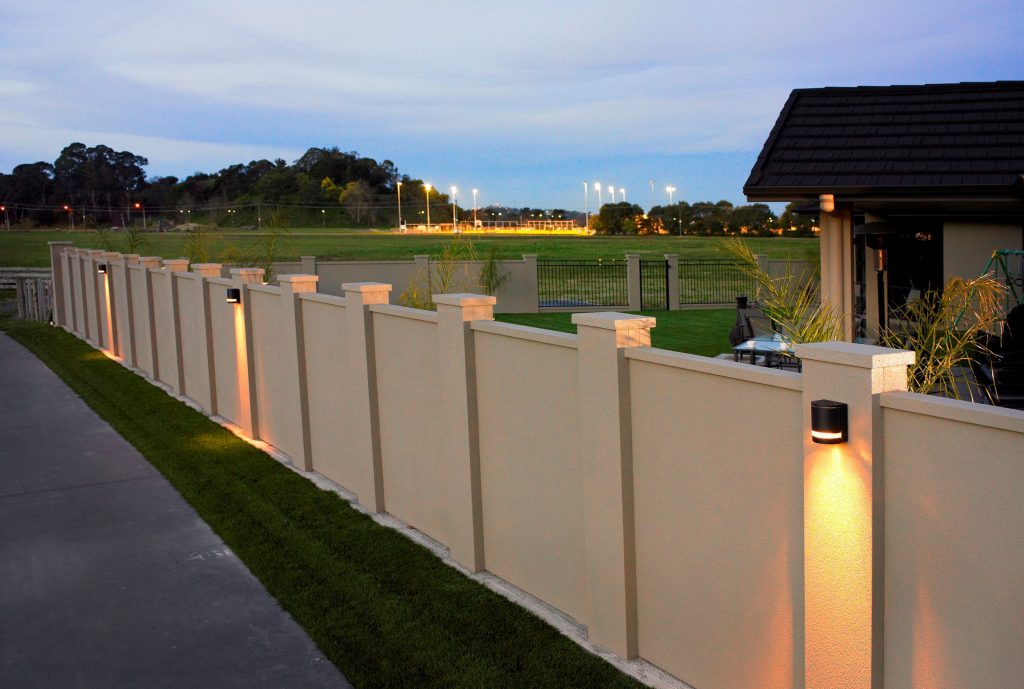
12. Curtain Walls
The walls are generally constructed with aluminum, fiberglass, and steel frames and are commonly found in offices and buildings like hospitals and public places.
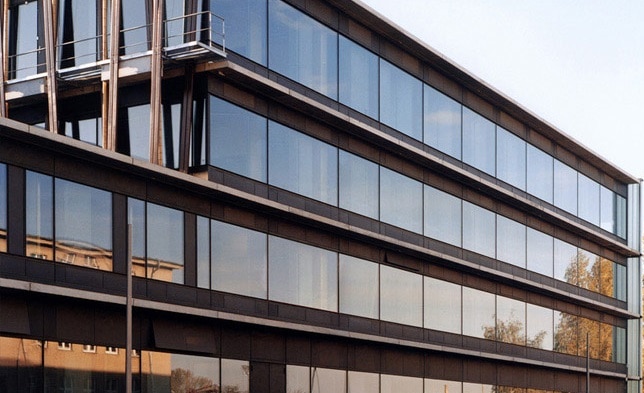
13. Mullion Wall
Mullion walls generally refer to the weight transfer techniques used in transferring floor slab weight on prefabricated wall panels.

Also read: 10 Different Types of Footings
14. Knee Wall
These are small walls that are constructed on the third level of the houses and also on the second level of the houses. It helps to add height to the room and rafters.
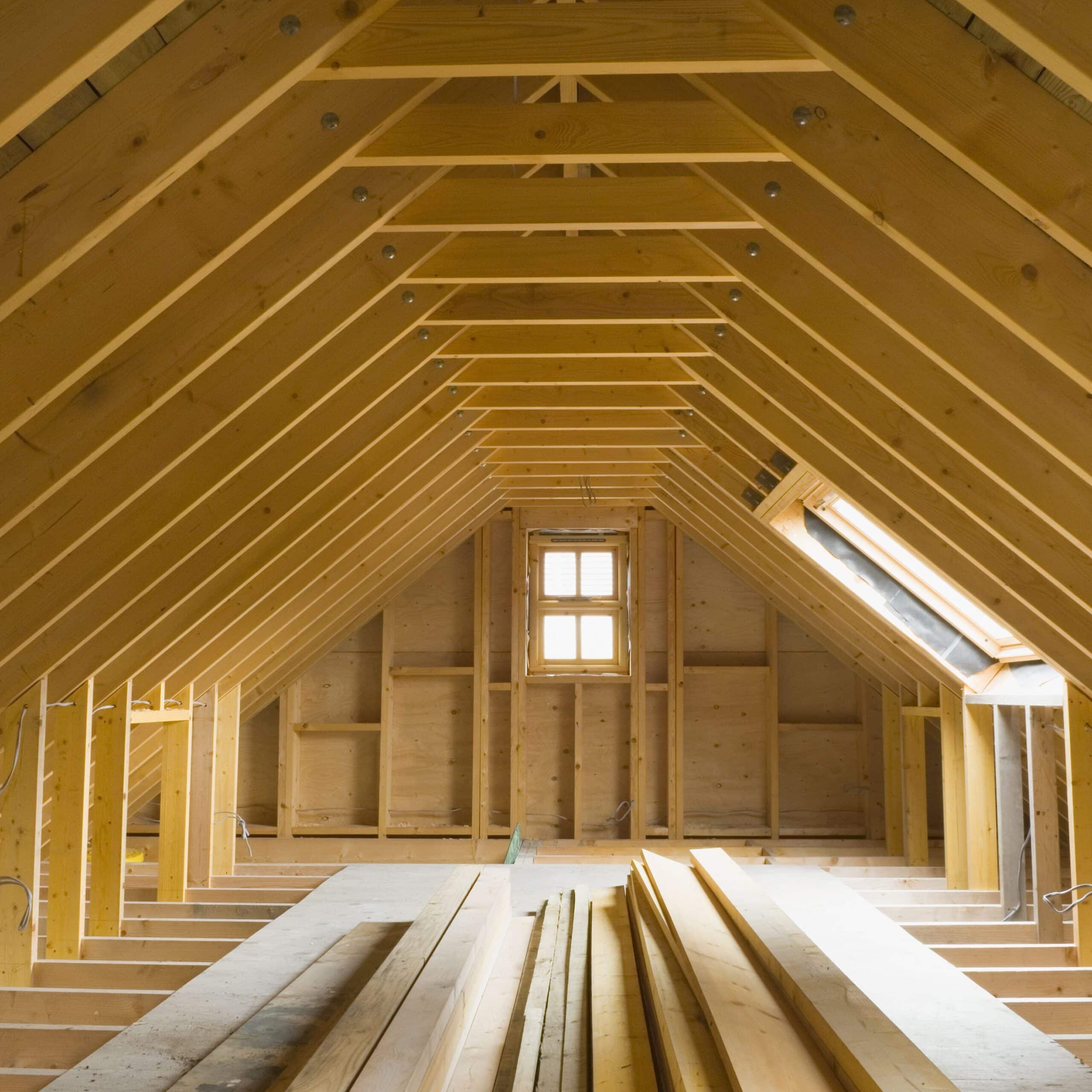
15. Infill Wall
This is a form of supportive wall that scuttles around the three-dimensional framework structural perimeter of the building.
16. Party Wall
A party wall is a form of divided structure that is constructed within the building. The wall is constructed to ensure that the residing structure within the building is protected from noise and fire. However, the wall doesn’t bear the structure’s load but rather shares the weight of numerous structures.
17. Random Rubble Masonry Wall
The walls have more masonry was compared to the course rubble masonry wall. The random rubble masonry wall has an irregular shape.
There are hell lot of wall types that are being constructed around the world. However, the ones mentioned above are the ones that are widely popular.
FAQs
-
What are the most common types of walls used?
Some of the most common types of walls used in constructing buildings are load bearing and non-load bearing walls. Other than this cavity and shear walls are used too.
-
Which is the most stable type of wall?
Geocell walls are often considered as the most stable and rigid type of wall used in constructing buildings around the world.
-
What is the use of cavity walls?
For the best thermal insulation, cavity walls are used. It also helps in reducing the heat transmission and makes the temperature cool inside.
-
What are the parts of the walls being called?
Walls are generally divided into three major things and these are called wall exterior, wall interior and wall layers.
Types of Walls: Bottom Line
In a nutshell, these are different types of walls used in building constructions. With this information, you’ll be able to decide which kind of wall works well for your buildings. Moreover, knowledge about the types of walls is also beneficial to constructing a robust building and giving your area the right structure.
If you are an engineer and think that we have missed some of the types of walls that should be on the list, do let us know in the comments section below.

